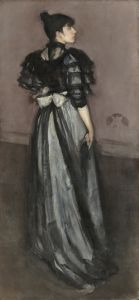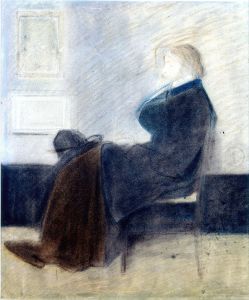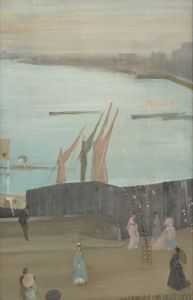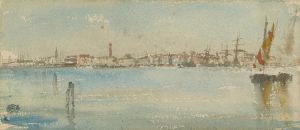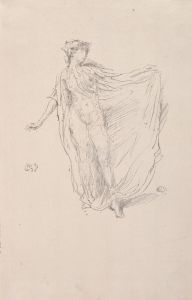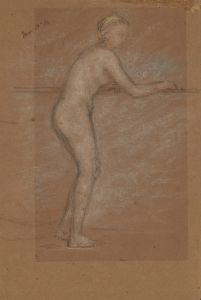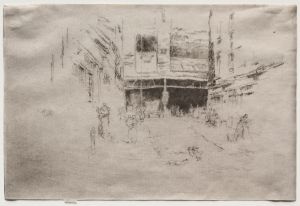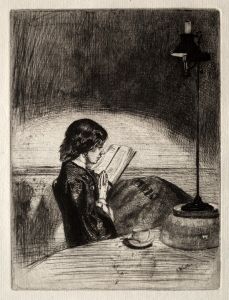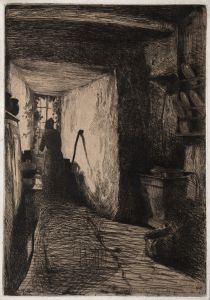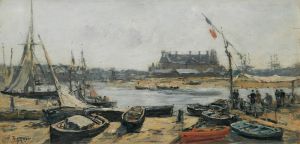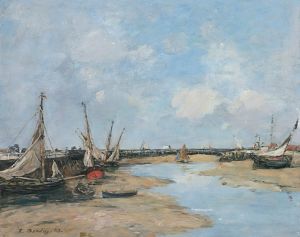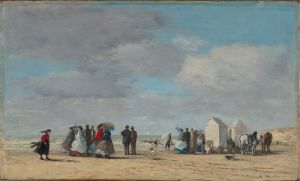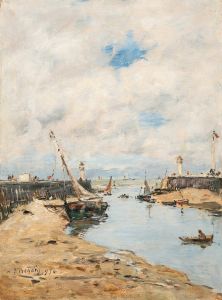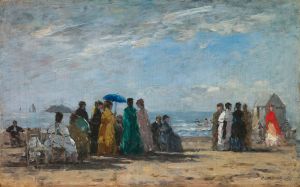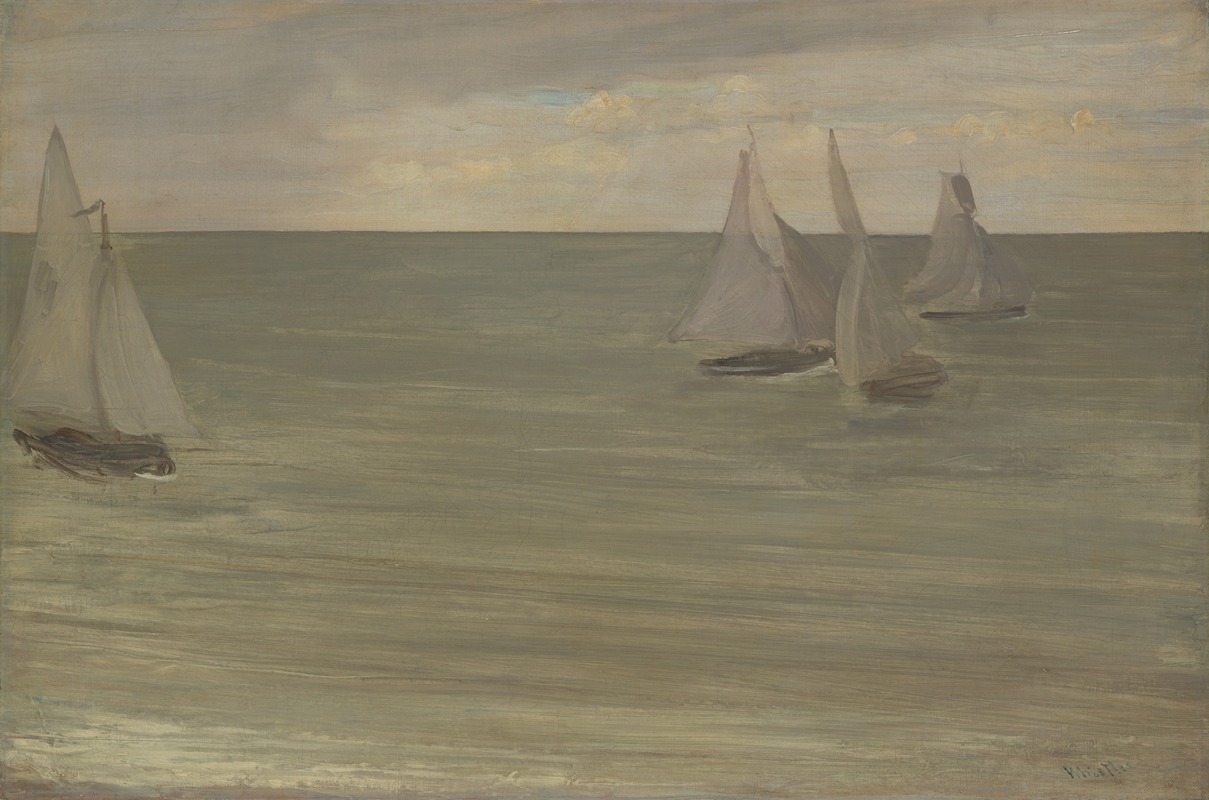
Trouville
A hand-painted replica of James Abbott McNeill Whistler’s masterpiece Trouville, meticulously crafted by professional artists to capture the true essence of the original. Each piece is created with museum-quality canvas and rare mineral pigments, carefully painted by experienced artists with delicate brushstrokes and rich, layered colors to perfectly recreate the texture of the original artwork. Unlike machine-printed reproductions, this hand-painted version brings the painting to life, infused with the artist’s emotions and skill in every stroke. Whether for personal collection or home decoration, it instantly elevates the artistic atmosphere of any space.
James Abbott McNeill Whistler's Trouville is a painting created by the American-born artist, who is widely recognized for his contributions to the Aesthetic Movement and his innovative approach to art during the 19th century. Whistler, known for his distinctive style and emphasis on tonal harmony, often sought to capture the mood and atmosphere of his subjects rather than focusing on detailed realism. Trouville is one such example of his work, reflecting his interest in landscapes and seascapes.
The painting depicts the coastal town of Trouville-sur-Mer, located in the Normandy region of France. Trouville was a popular destination for artists and tourists during the 19th century, known for its picturesque beaches and vibrant seaside culture. Whistler visited the area in the early 1860s, a period when he was exploring plein air painting and experimenting with capturing the effects of light and atmosphere in outdoor settings. This approach aligned with the practices of other artists of the time, including members of the Barbizon School and early Impressionists, although Whistler's work retained its own unique qualities.
In Trouville, Whistler employs a subdued color palette and loose, fluid brushstrokes to evoke the tranquil yet dynamic essence of the seaside. The painting reflects his preference for simplicity and his focus on the interplay of light, air, and water. Whistler's technique in this work demonstrates his departure from traditional academic painting, favoring instead a more modern and expressive approach. This stylistic choice would later influence his development of "art for art's sake," a philosophy that emphasized the intrinsic value of art independent of narrative or moral content.
The exact date of the painting's creation is not definitively documented, but it is generally associated with Whistler's time in France during the early 1860s. During this period, he was deeply influenced by his interactions with other artists and the artistic movements emerging in Europe. While Trouville is not as widely known as some of Whistler's other works, such as Arrangement in Grey and Black No. 1 (commonly known as Whistler's Mother), it remains an important example of his exploration of landscape painting and his evolving artistic vision.
Today, Trouville is recognized as part of Whistler's broader body of work that showcases his innovative approach to art and his ability to capture the ephemeral qualities of nature. The painting is held in a private collection or museum, though specific details about its current location are not readily available in public records. Whistler's legacy as a pioneering artist continues to be celebrated, and works like Trouville contribute to our understanding of his artistic journey and the broader context of 19th-century art.





